As a Chassis engineer, most of the work we do is out of sight of the consumer. Steering, suspension, and most of the braking system lives happily underneath the car where they are only open to scrutiny by mechanics and that tow truck guy who rolls your car back onto its feet after your foolish arse put it upside down in a ditch.
There are some exception, of course. Wheels are the first to come to mind, along with the brake calipers (assuming the wheel styling is open enough between the spokes). But there is one design feature that shows up on some cars that, although not something designed by chassis engineers, is influenced entirely by them.
I’m talking about those little bumps you see on some rear fender flares.
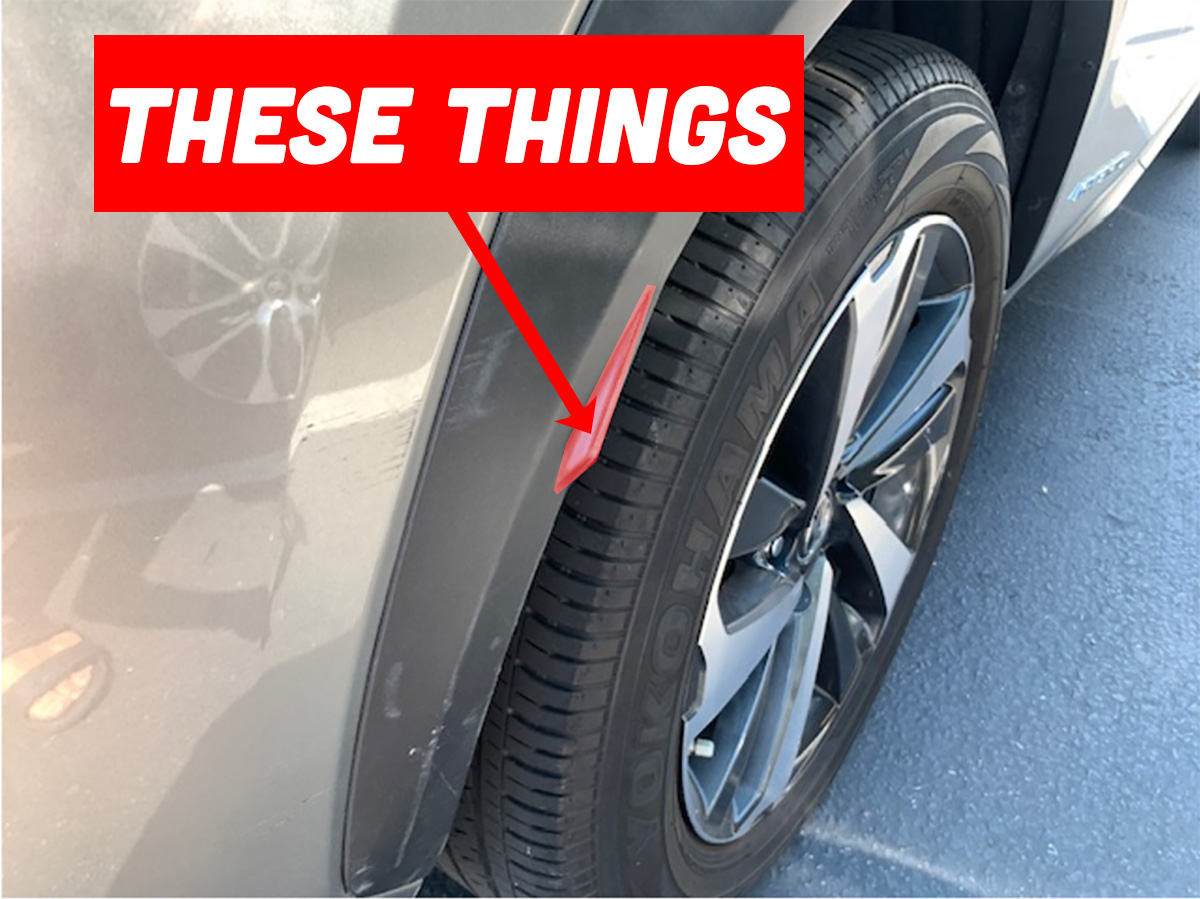
What the hell are those things, anyway? Why are they there? And why do only some cars have them?
They come in a variety of sizes and shapes. The one above is on a Lexus NX300H, and happens to be fairly prominent. Here’s one on a Toyota Corolla.
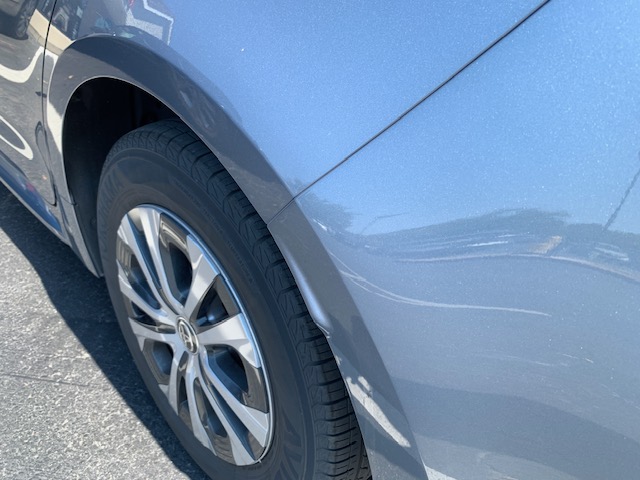
It’s a bit more subtle. But in some cases, they can be quite large — some may say gaudy, like these on an Infiniti QX60:

The best job I’ve seen in a while of hiding this feature can be seen on this Porsche Macan:
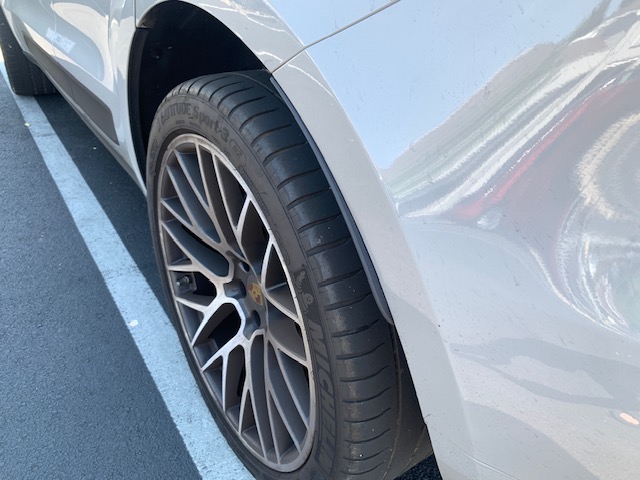
Whether gaudy and obtrusive, or small and subtle, each company clearly went through a lot of trouble to put these features there, so there must be a very good reason for it, right?
Yes there is.
In order to sell cars in Europe, manufacturers must meet certain homologation rules, and one of these is European Union Commission Regulation 1009/2010, more recently replaced by 2019/2144. This rule, in part, states that in an area marked by a line 30 degrees forward of the tire center to a line 50 degrees behind the tire center (the image above shows this visually), no part of the tire may protrude farther outboard than the body. In other words, there must be something on the body that extends further outboard than the tire within this 80-degree wedge shape.
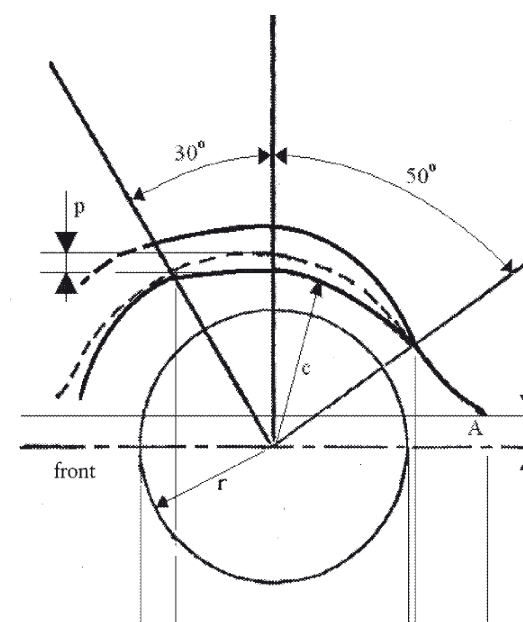
The reason the standard exists is to protect pedestrians from accidentally brushing up against a moving car and coming into contact with a rotating tire.
Unfortunately, the styling of some vehicles does not naturally provide for the necessary tire coverage. The designers (and possibly aerodynamicists) may want to taper the rear part of the body more aggressively, which may mean that the sheetmetal near the back of the 50 degree portion may end up inboard of where it needs to be to meet the ECE requirement.
Designers resolve this by adding a small bump as part of the fender flare, or in the case of the Porsche, what appears to be a black extension of the wheelhouse liner that sticks out past the sheet metal. The more the body tapers, of course, the larger the bump may need to be.
In my years of designing suspensions, the way we would ensure we meet the requirement was to draw the 30/50 degree wedge in our CAD system and lay it flush with the outside of the tire profile. Something like this:
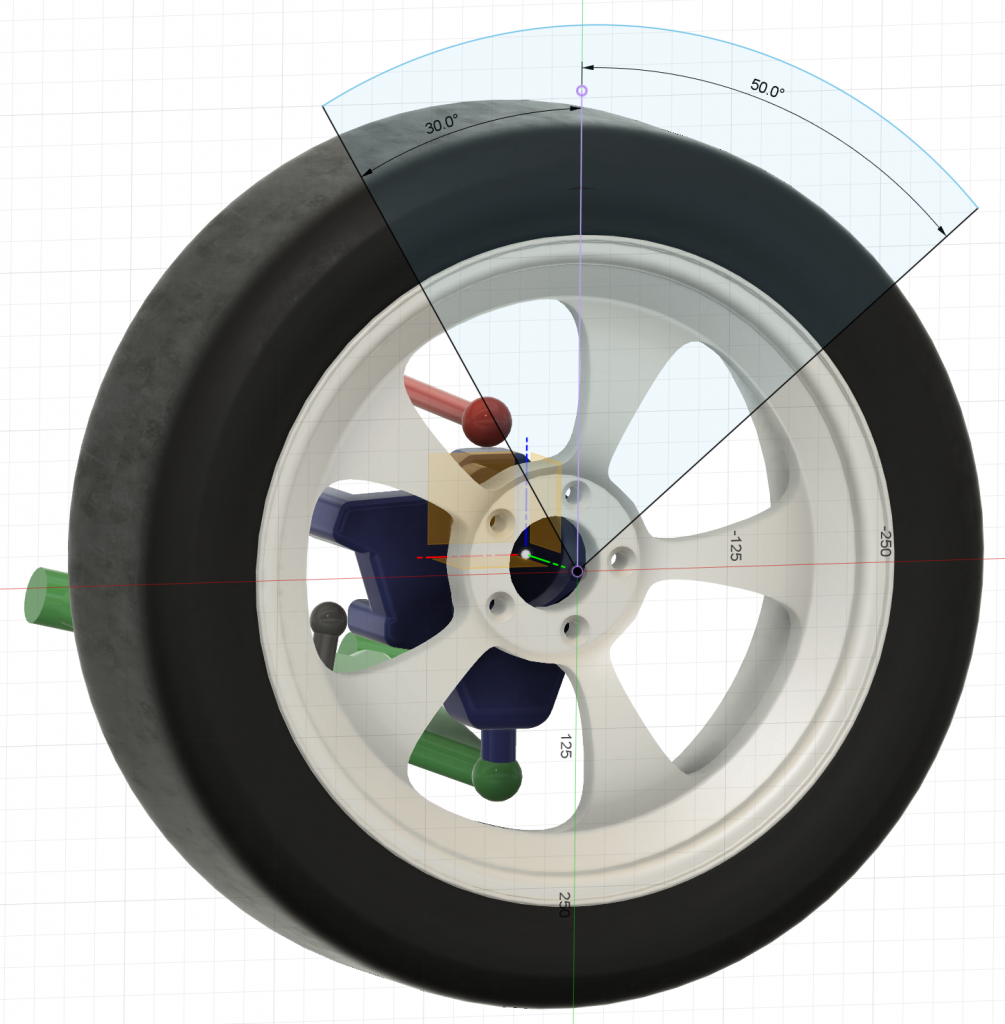
We would then move it 5 mm outboard and provide this to the design studio. The 5 mm was added to account for production variability. The design that engineers work to in CAD assumes all parts are made to their exact dimensions, but that is never the case. No production process is perfectly exact, and the parts that come out of it are always slightly different from the design. Some will be slightly smaller, and some will be slightly bigger. It’s known as “process variability,” and the trick is to keep it as small as possible so that each part is very, very close to being perfect.
However, if we look at all the parts that make up a car body and all the parts that make up a suspension and put them together, even small variations in the sizes of those parts can add up to a large overall difference from car to car. During a production build, some cars may have the tire sitting very close to the edge of the fender while in other cars it may be farther away. We need to ensure that all the cars built meet the standard because the European Union may check ANY car. You have no idea which car they may choose, and they may choose several.
Moving the wedge plane outboard 5 mm ensures that all cars will meet the standard and there is no chance of a failure, no matter which car the commission chooses to check.
Once the design studio receives the 5mm-displaced wedge from the chassis team, designers then need to ensure that some portion of the bodywork extends at least to this wedge or beyond. Of course, this doesn’t always fit with the design the studio has in mind, and designers don’t always like what they have to do to make it all work. I spoke to our own Adrian Clarke and here is what he had to say about the matter:
I hated these bloody things! They were always a pain in the ass. There’s lot’s of things to consider when you’re trying to work out wheels and tires: is the profile of the tire correct to protect the alloy wheel? Have we left enough clearance for snow chains where those are a legal requirement? Also what is the shape of the rear of the car doing? Do we need one of those little trim pieces? How small can we make it?
Unfortunately, the EU gets the last word on this and so, designers and chassis engineers have to design the car to meet the requirement, or you don’t get to sell your car.
So now that you know what these things are and what they’re for, you can see if your own car has them and/or which cars in the parking lot have them. And if you’ve never noticed them before, you’re going to see them everywhere now and it’s going to bug the crap out of you. You’re welcome!

